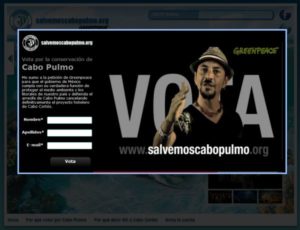Some of the big obstacles facing most every organization are constituent databases (too many of them and they don’t talk to one another) and departmental silos (that make it tough for staff to both talk and work together). Greenpeace Spain tackled the issues of data and team integration head on and this story shares some of their experience.
So, which comes first? Data integration or team integration? Chicken or egg?
It’s a tough question with no clear answer. You can mush data together but if people aren’t working together with shared goals and campaigns you probably won’t change how data is used. On the other hand, integrating data-driven teams or departments without a shared data policy may result in differences over strategy and tactics.
The short answer? It takes time, collaboration and a willingness to try different models — some of which might be pretty unfamiliar to staff. How do you get from silos to the promised land of integration?
This isn’t a moot question for nonprofits and their fundraisers, communicators, mobilisation teams, marketers and senior leaders. Multichannel fundraising is a huge topic, for instance. For mobilisation teams on the front lines of public engagement these internal partnerships are critical in reaching more people and helping them get involved in meaningful ways.
Over the last couple years, Greenpeace Spain has deliberately focused on both team collaboration and data integration. A cross-organization “Participation Department” was formed to bring together Actions, Volunteers and Mobilisation (online and offline). This Mobilisation unit works in interdepartmental teams to partner with fundraising, communications and volunteers.
Data was a stumbling block from the start. Collaboration and integrated planning was happening but, as Pablo Chamorro (until recently the head of the Mobilisation Unit at Greenpeace Spain) notes, “we were kind of ‘selfish’ with our own data base, in terms of looking for our own aims (fundraising or mobilisation).”
The organization’s leaders made the decision to integrate three databases into one. It was an expensive and highly technical endeavor. The goals of integrated teams meant that better shared information about constituents was needed.
Pablo describes the database situation prior to integration:
A little over a year ago we had three different databases: Supporter database (fundraising), cyberactivist (done online actions), people who have left email address on campaigns (sympathizers). There were three different people in charge and nothing was merged.
The results were familiar: different emails would end up going to the same people at same time with different messages.
Often, organizations focus first on technical integration of databases. This can be powerful but is time-consuming and expensive. The kicker? Data in one place doesn’t mean staff with different goals will work together.
Online team works with merged data
Recently, Greenpeace Spain set up a cross-department online team to collaborate around best uses of the merged database to in support of Participation, fundraising, and mobilisation. Pablo described the current partnership for us:
How we use the data base is a decision of the team, and we try to merge mobilisation and fundraising goals. That is a very interesting part of the work. Today every newsletter which is sent to our supporters is checked and complemented by mobilisation unit suggestions and comms department as well.
Check out Pablo talking about data integration in a recent conversation:
The Greenpeace Spain team tackled cross-department integration first but quickly saw that real database merging would help.
Meaningful team integration matters
Collaboration around the database has also led the teams to work together on the ground. Recent actions working to stop a high-rise beach hotel in a national park included fundraising and mobilisation staff working alongside one another.
Leadership at Greenpeace Spain made mobilisation a priority but knew that multiple databases were getting in the way of strong fundraising, communications and mobilisation. Creating a multi-department Participation Department and an online team that focuses in part on data has given staff room to better collaborate and communicate.
The results include clearer messages around mobilisation activities and fundraising that have helped grow the list of contacts and bring more people to events like those at the beach hotel campaign.
The story Pablo tells below about the beach hotel mobilisation is a great example of the power of integrated teams (and value of integrated communications and data). Enjoy (and don’t forget to let us know about your mobilisation innovations in the comments below or tweet it using the #GPMobSquad hashtag).
Categories:
organising, mobilising and engagement



